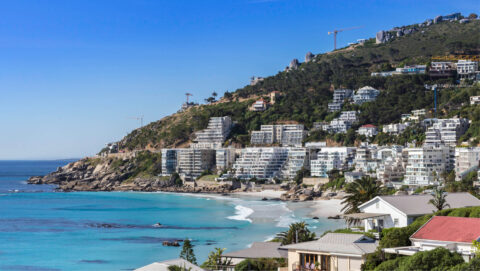Commercial Property PR
Property Trends To Watch In 2026: Where To Buy And Why
From record-breaking sales in the luxury market to rising demand in emerging areas like Limpopo’s Great North and KwaZulu-Natal’s North Coast, the foundations are being laid for a dynamic year ahead.
“After five interest rate cuts in recent months, we’ve seen clear signs of buyer confidence returning,” says Bradd Bendall, BetterBond’s National Head of Sales. “Whether it’s lifestyle migration, infrastructure-led development or the search for long-term value, 2026 is shaping up to be a year of strategic opportunity for property professionals, developers and investors.”
The luxury market: confidence returns to high-end buyers
South Africa’s luxury property sector is gaining momentum, with home loans above R3 million growing by 6.6% this year. BetterBond data shows that loans of more than R2 million now make up 22% of all bonds granted over the past 12 months.
“Buyer activity in the R3 million and above segment has strengthened, especially in metropolitan areas,” notes Bendall. “If interest rates drop again towards the end of this year or early 2026, we could see even more activity for higher-priced homes.”
According to the 2025 Africa Wealth Report by Henley & Partners and New World Wealth, South Africa remains the continent’s wealthiest country, home to over 41,000 millionaires. Unsurprisingly, Cape Town and Johannesburg dominate the luxury landscape, with Cape Town’s Atlantic Seaboard leading the pack. Suburbs such as Camps Bay, Clifton, Constantia, Bantry Bay and the Waterfront continue to command some of the highest average property prices – often upwards of R20 million – with several record sales exceeding R50 million in 2024.
The Western Cape accounted for 40% of all property transactions above R10 million last year, and although home to just 12% of South Africa’s population, the province represents 31% of total property value. Good governance, infrastructure and quality of life continue to underpin its appeal.
But Gauteng’s high-end suburbs are also holding strong. In Sandton, Hyde Park and Bryanston, luxury buyers are prioritising secure estates, access to top schools, and proximity to business hubs – with listings often topping R55 million. In KwaZulu-Natal, the coastal stretch around Umhlanga and Izinga continues to attract affluent buyers, with homes in premier estates listed for R13 million or more.
Foreign buyers, too, are returning. Lightstone data shows overseas buyers paying on average R2.7 million per property – well above the national average of R1.6 million – with the Western Cape the preferred destination across multiple price bands.
“South Africa’s luxury property market continues to demonstrate remarkable resilience,” concludes Bendall. “Local and international interest remains strong, supported by the enduring appeal of our top-tier suburbs.”

KwaZulu-Natal’s north coast: the new frontier of coastal living
While the Western Cape continues to attract semigration buyers, KwaZulu-Natal’s North Coast is fast emerging as one of the country’s most exciting growth corridors. This region, stretching from Umhlanga to Sheffield Beach, combines coastal charm with modern infrastructure and a wealth of new developments.
“Localised movement is picking up, with homeowners moving away from Durban’s urban centre to coastal areas offering better living conditions and improved infrastructure,” says Bendall.
According to Rainmaker Marketing’s North Coast Property Market Report, nearly 60% of relocations to the Greater North Coast come from within KwaZulu-Natal itself, driven by new developments such as the Sibaya Coastal Precinct, which will deliver 12,000 residential opportunities.
Lifestyle estates dominate the market. In Salt Rock, 67% of residential properties are located within estates – highlighting sustained demand for secure, community-oriented living. Zimbali Lakes, Brettonwood, Simbithi, Palm Lakes, Seaton, Zululami and Ballito Hills are among the most sought-after names, with estate homes selling for up to 64% more than those outside gated communities.
BetterBond’s data supports this surge, showing that KwaZulu-Natal led the country in residential building completions in 2025, with a 53.6% year-on-year increase – surpassing even the Western Cape.
“The North Coast offers excellent schools, a growing economic hub and an enviable coastal lifestyle,” adds Bendall. “With property options ranging from R1.1 million for sectional title units to over R20 million for luxury freeholds, the region delivers both accessibility and aspirational living.” As the Western Cape becomes increasingly saturated, KwaZulu-Natal’s North Coast offers a compelling balance of value, quality and opportunity – making it one to watch in 2026.
Limpopo’s Great North: the quiet boom
At the opposite end of the spectrum, Limpopo has quietly become South Africa’s hottest emerging property market. Driven by the allure of bushveld living and new infrastructure projects, the province is seeing a surge in both sales and building activity.
“Limpopo’s appeal lies in its blend of natural beauty, affordability and growth potential,” explains Bendall. “Hoedspruit, in particular, has become a magnet for investors and lifestyle buyers.”
According to BetterBond’s August 2025 Property Brief, the value of residential buildings completed in Limpopo over the past six months is the highest in the country, signalling robust developer confidence.
Lightstone data shows house price inflation in Limpopo at 6.82%, and sales in Hoedspruit have nearly doubled year-on-year – from 383 in 2024 to 504 so far in 2025. The area’s average sales price remains below R2 million, offering exceptional value compared to coastal markets.
Farm and estate properties are particularly strong performers: homes in Hoedspruit Wildlife Estate average just under R4 million, while game farms fetch over R42 million. International buyers from the Netherlands, Germany, the UK and France are among those driving demand for safari and eco-estate properties. “With rising sales, surging rentals and transformative infrastructure on the horizon, Limpopo’s Great North is emerging as one of the country’s most dynamic markets,” says Bendall.
Outlook for 2026: confidence and opportunity
From the high-end enclaves of Cape Town to the growth corridors of KwaZulu-Natal and Limpopo, South Africa’s property landscape in 2026 will be defined by diversity, mobility and value. As Bendall concludes, “We’re seeing renewed confidence at every level of the market – from first-time buyers entering at accessible price points to affluent investors expanding their portfolios. For developers and property professionals, 2026 represents an opportunity to align with these trends and position themselves where demand is rising most.”
0800 007 111





